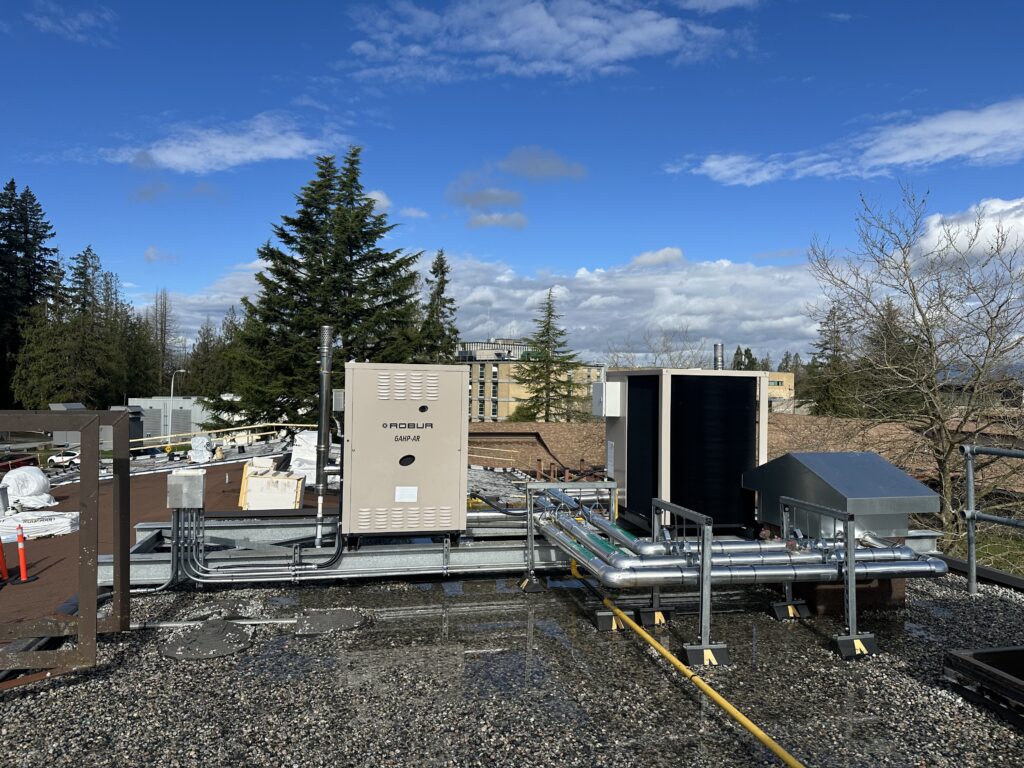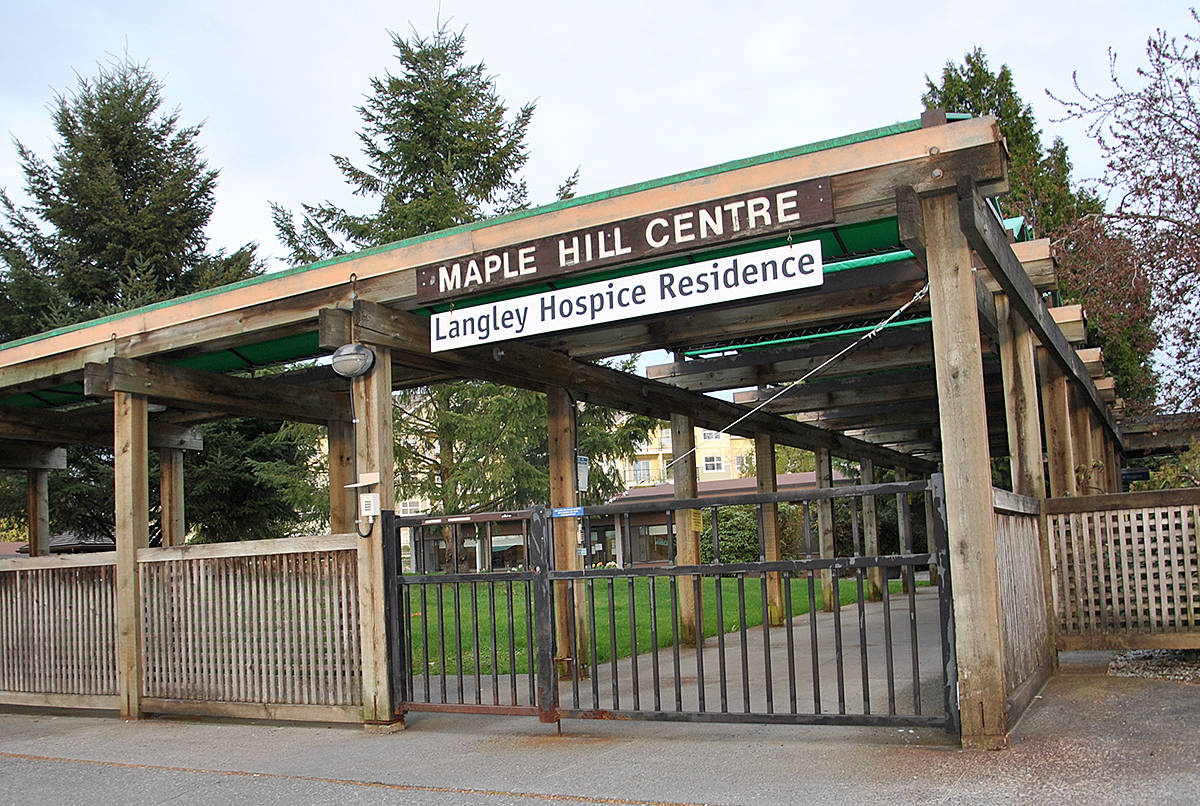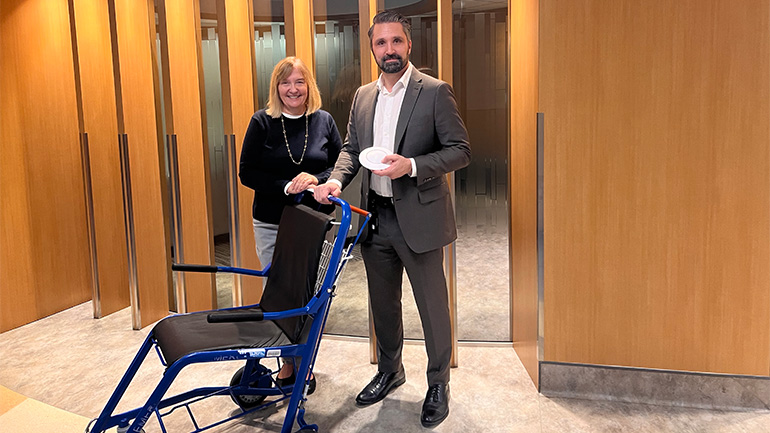Health care facilities are increasingly prioritizing sustainability, recognizing that energy efficiency not only reduces operational costs but also enhances patient and staff comfort. At Langley Memorial Hospital’s long term Care (LTC) facilities—Cedar Hill and Maple Hill Lodge—aging cooling systems prompted the need for an upgrade. However, a retrofit with electrically driven air conditioning was not feasible due to insufficient electrical capacity at the sites and prohibitive upgrade costs.
To address this challenge, an engineering consultant proposed a cutting-edge alternative: Gas Absorption Heat Pumps (GAHP-AR). These highly efficient units provide both heating and cooling, where the energy savings in the winter from hot water heating are sufficient to offset the increased energy consumption during the summer for cooling. This makes the GAHP-AR technology a versatile and energy-conscious solution.

Energy savings and environmental benefits
GAHP-AR offers both heating and cooling capacity, making it a good year-round solution. From an environmental perspective, the implementation of gas absorption heat pumps represents a major step toward sustainability. The use of natural gas as their primary energy source avoided the strain on electrical infrastructure. Besides providing energy efficient heating, the new unit also provided the much needed supplemental cooling to improve the thermal comfort of the patient in summer for this site.
Beyond enhancing thermal comfort, the new GAHP-AR system is delivering substantial energy savings. The energy savings during winter months effectively offset the gas used for the supplemental cooling during summer, balancing efficiency throughout the year. The project is estimated to achieve an average energy reduction of 22 per cent, significantly improving operational efficiency. Heating efficiency has increased from 80-90 per cent to an impressive 114-125 per cent, contributing to lower emissions and reduced the consumption of conventional fuel sources.
Overcoming Barriers to Implementation
Executing this project was not without challenges. The lack of sufficient electrical capacity initially posed a major hurdle, which was overcome through the innovative use of GAHP-AR systems. Additionally, the installation process required a crane to lift the units onto the building rooftops, demonstrating the complexity of retrofitting health-care infrastructure.
Collaboration played a vital role in the project’s success. The Energy & Environmental Sustainability (EES) team coordinated efforts with an external engineering consultant for assessment, design, and implementation. Facility Maintenance and Operations (FMO) teams provided crucial on-site support, and FortisBC contributed financial incentives, recognizing the project’s potential for long-term energy savings.
Sustainable Infrastructure for Changing Times
The Langley LTC project is a prime example of how health care institutions can integrate sustainability into their infrastructure upgrades. Keeping patients cool during extreme heat – increasingly on the rise in Canada – is paramount to keeping them healthy. By adopting innovative solutions like gas absorption heat pumps, facilities can enhance patient care, reduce operational costs, and minimize their environmental footprint.
As health-care professionals and administrators seek ways to modernize infrastructure sustainably, projects like this underscore the importance of strategic planning, cross-sector collaboration, and the adoption of cutting-edge technology. The success of the Langley LTC retrofit serves as an inspiring model for other health-care facilities aiming to balance efficiency, sustainability, and comfort in patient care environments.








